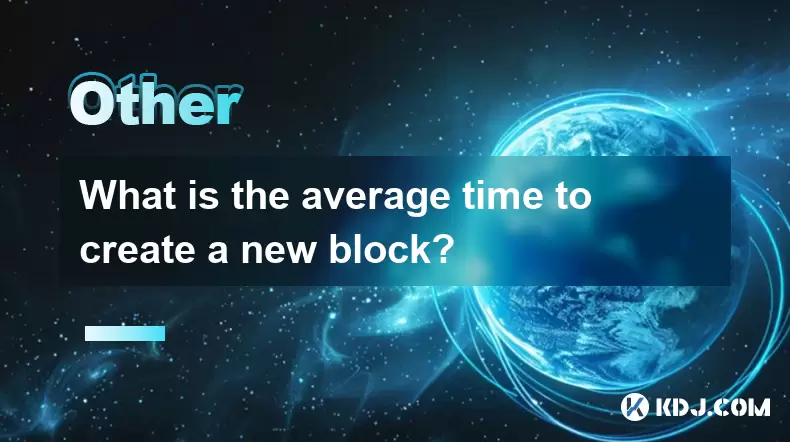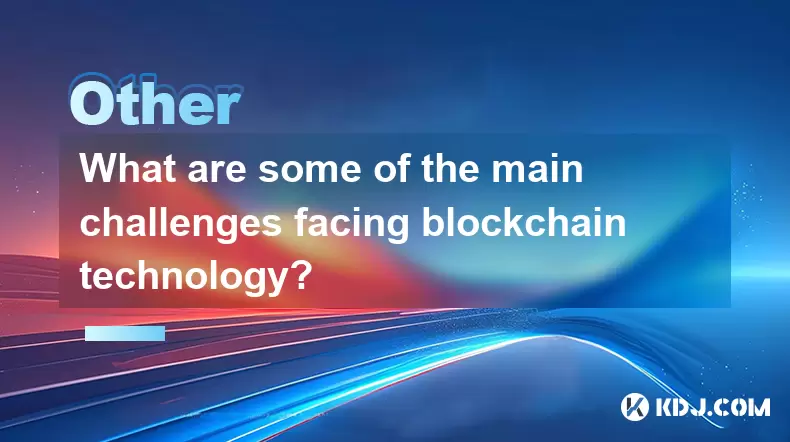-
 Bitcoin
Bitcoin $117300
1.99% -
 Ethereum
Ethereum $3884
5.89% -
 XRP
XRP $3.268
9.33% -
 Tether USDt
Tether USDt $1.000
0.02% -
 BNB
BNB $783.0
1.78% -
 Solana
Solana $173.6
3.51% -
 USDC
USDC $0.9999
0.00% -
 Dogecoin
Dogecoin $0.2193
7.00% -
 TRON
TRON $0.3380
0.30% -
 Cardano
Cardano $0.7769
5.08% -
 Stellar
Stellar $0.4350
9.36% -
 Hyperliquid
Hyperliquid $40.23
5.78% -
 Sui
Sui $3.739
6.95% -
 Chainlink
Chainlink $18.30
9.46% -
 Bitcoin Cash
Bitcoin Cash $581.7
2.11% -
 Hedera
Hedera $0.2577
5.51% -
 Ethena USDe
Ethena USDe $1.001
0.00% -
 Avalanche
Avalanche $23.08
4.23% -
 Litecoin
Litecoin $121.7
2.24% -
 UNUS SED LEO
UNUS SED LEO $8.962
-0.34% -
 Toncoin
Toncoin $3.332
1.36% -
 Shiba Inu
Shiba Inu $0.00001273
3.39% -
 Uniswap
Uniswap $10.35
6.84% -
 Polkadot
Polkadot $3.818
4.01% -
 Dai
Dai $1.000
0.01% -
 Bitget Token
Bitget Token $4.446
2.13% -
 Cronos
Cronos $0.1491
4.96% -
 Monero
Monero $255.4
-9.78% -
 Pepe
Pepe $0.00001099
4.80% -
 Aave
Aave $284.0
8.01%
how blockchain can be used in supply chain
By integrating blockchain technology, businesses can enhance supply chain transparency, streamline data management, improve efficiency, enhance security, empower consumers, reduce fraud and counterfeiting, and foster sustainability.
Oct 14, 2024 at 06:54 am

How Blockchain Can Be Used in Supply Chain
1. Enhance Transparency and Traceability:
Blockchain provides a distributed and immutable ledger that records all transactions throughout the supply chain. This allows participants to easily track the provenance and movement of goods, reducing the risk of counterfeiting and fraud.
2. Streamline Data Management:
Blockchain can centralize supply chain data into a single source of truth, eliminating the need for multiple disconnected systems and spreadsheets. This improves data accuracy and consistency, facilitating efficient collaboration among supply chain stakeholders.
3. Improve Efficiency and Reduce Costs:
By automating manual processes and reducing the need for intermediaries, blockchain reduces operational costs and improves supply chain efficiency. Digital contracts can be executed automatically, expediting transactions and eliminating the need for paper-based documentation.
4. Enhance Security and Compliance:
Blockchain's cryptographic algorithms and decentralized nature provide robust security, protecting supply chain data from unauthorized access, manipulation, and fraud. The immutability of the ledger ensures compliance with regulatory requirements, reducing legal risks.
5. Empower Consumers:
Consumers can use blockchain to access transparent information about product origins, sustainability, and production practices. This empowers them to make informed purchasing decisions and hold supply chain participants accountable for ethical practices.
6. Facilitate Cross-Border Transactions:
Blockchain eliminates geographical barriers by providing a universal platform for supply chain transactions. It reduces cross-border documentation requirements, customs delays, and currency exchange costs, simplifying cross-border trade.
7. Reduce Fraud and Counterfeiting:
Blockchain's transparent ledger system and anti-tampering measures make it difficult for malicious actors to commit fraud or counterfeit goods. Product provenance and authenticity can be easily verified, protecting consumers and businesses alike.
8. Improve Sustainability:
By tracking product lifecycle data and monitoring environmental impact, blockchain supports sustainable supply chain practices. It facilitates responsible sourcing, reduces waste, and promotes energy efficiency.
9. Enable Smart Contracts:
Smart contracts on blockchain can automate contractual agreements between supply chain participants, ensuring that predefined conditions are met before payments are released or goods are shipped. This reduces human error and disputes.
10. Optimize Inventory Management:
Blockchain can connect different inventory management systems, providing a real-time view of inventory levels across the supply chain. This enables optimization of inventory allocation, demand forecasting, and waste reduction.
Disclaimer:info@kdj.com
The information provided is not trading advice. kdj.com does not assume any responsibility for any investments made based on the information provided in this article. Cryptocurrencies are highly volatile and it is highly recommended that you invest with caution after thorough research!
If you believe that the content used on this website infringes your copyright, please contact us immediately (info@kdj.com) and we will delete it promptly.
- Cold Wallet Crypto in 2025: The Future is Now, Ya'll
- 2025-08-08 05:10:13
- MAGACOIN, SOL, and ADA: A Tale of Shifting Tides in Crypto
- 2025-08-08 05:10:13
- SHIB Price, PEPE, and the Memecoin Supercycle: Who Will Reign Supreme?
- 2025-08-08 05:50:12
- Pudgy Penguins Price Prediction: Google Trends & Breakout Signals
- 2025-08-08 05:50:12
- UAE Crypto Regulation: SCA and VARA Unite to Streamline the Future of Digital Assets
- 2025-08-08 05:55:48
- MAGACOIN Finance: The Presale Phenomenon Rocking the Crypto World
- 2025-08-08 05:55:48
Related knowledge

What is the purpose of a nonce in mining?
Aug 04,2025 at 05:56pm
Understanding the Role of a Nonce in Cryptocurrency MiningIn the world of cryptocurrency mining, the term nonce stands for 'number used only once.' Th...

Can data on a blockchain be deleted?
Aug 05,2025 at 04:00am
Understanding Blockchain ImmutabilityThe core principle behind most blockchain systems is immutability, which means that once data is recorded onto th...

What is the difference between on-chain and off-chain transactions?
Aug 02,2025 at 04:22pm
Understanding On-Chain TransactionsOn-chain transactions refer to digital asset transfers that are recorded directly on a blockchain ledger. These tra...

What is the average time to create a new block?
Aug 06,2025 at 09:21pm
Understanding Block Creation in Blockchain NetworksThe average time to create a new block varies significantly depending on the specific blockchain pr...

How are blocks linked together?
Aug 04,2025 at 06:56am
Understanding the Structure of a BlockchainA blockchain is a decentralized digital ledger composed of a sequence of blocks, each containing a list of ...

What are some of the main challenges facing blockchain technology?
Aug 07,2025 at 02:58am
Scalability Constraints in Blockchain NetworksOne of the most persistent challenges in blockchain technology is scalability. As blockchain networks gr...

What is the purpose of a nonce in mining?
Aug 04,2025 at 05:56pm
Understanding the Role of a Nonce in Cryptocurrency MiningIn the world of cryptocurrency mining, the term nonce stands for 'number used only once.' Th...

Can data on a blockchain be deleted?
Aug 05,2025 at 04:00am
Understanding Blockchain ImmutabilityThe core principle behind most blockchain systems is immutability, which means that once data is recorded onto th...

What is the difference between on-chain and off-chain transactions?
Aug 02,2025 at 04:22pm
Understanding On-Chain TransactionsOn-chain transactions refer to digital asset transfers that are recorded directly on a blockchain ledger. These tra...

What is the average time to create a new block?
Aug 06,2025 at 09:21pm
Understanding Block Creation in Blockchain NetworksThe average time to create a new block varies significantly depending on the specific blockchain pr...

How are blocks linked together?
Aug 04,2025 at 06:56am
Understanding the Structure of a BlockchainA blockchain is a decentralized digital ledger composed of a sequence of blocks, each containing a list of ...

What are some of the main challenges facing blockchain technology?
Aug 07,2025 at 02:58am
Scalability Constraints in Blockchain NetworksOne of the most persistent challenges in blockchain technology is scalability. As blockchain networks gr...
See all articles

























































































